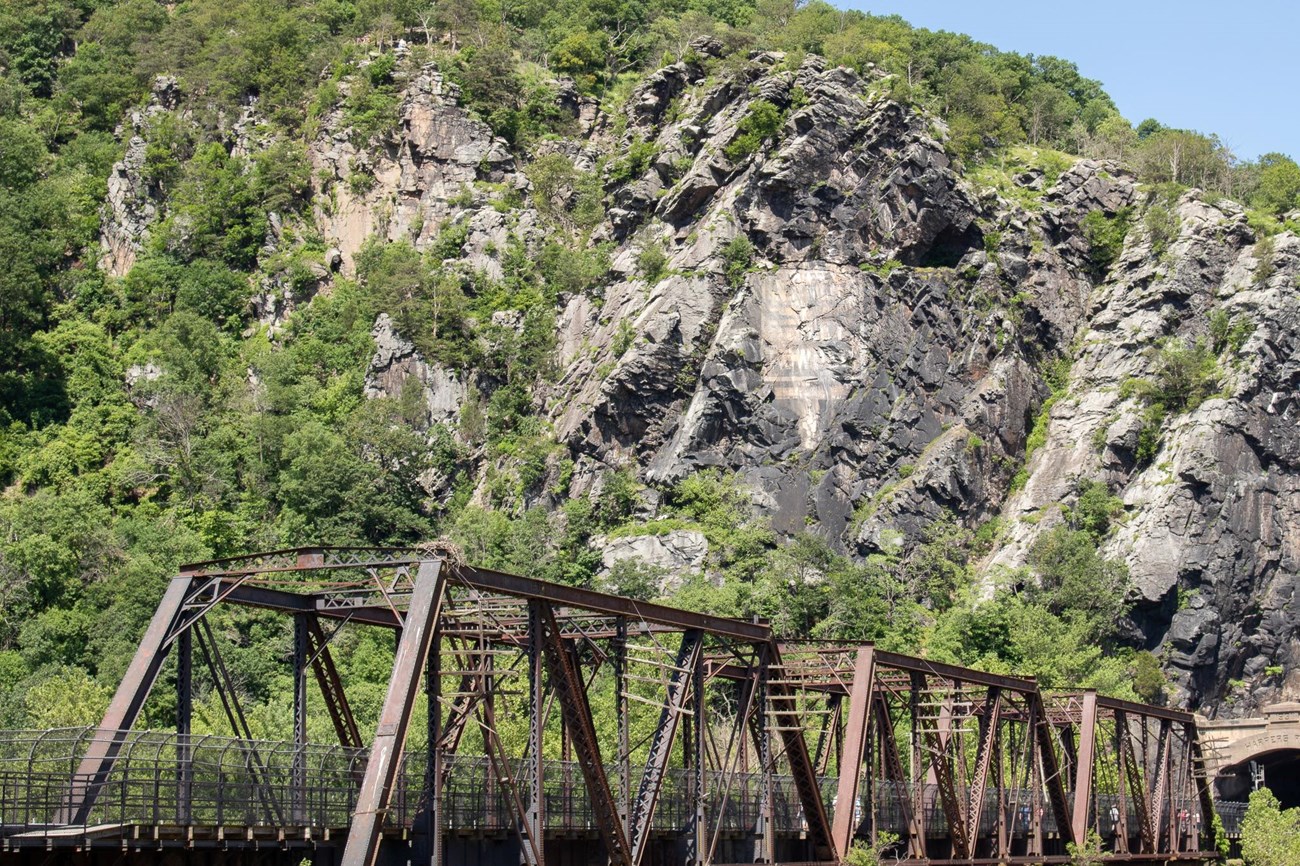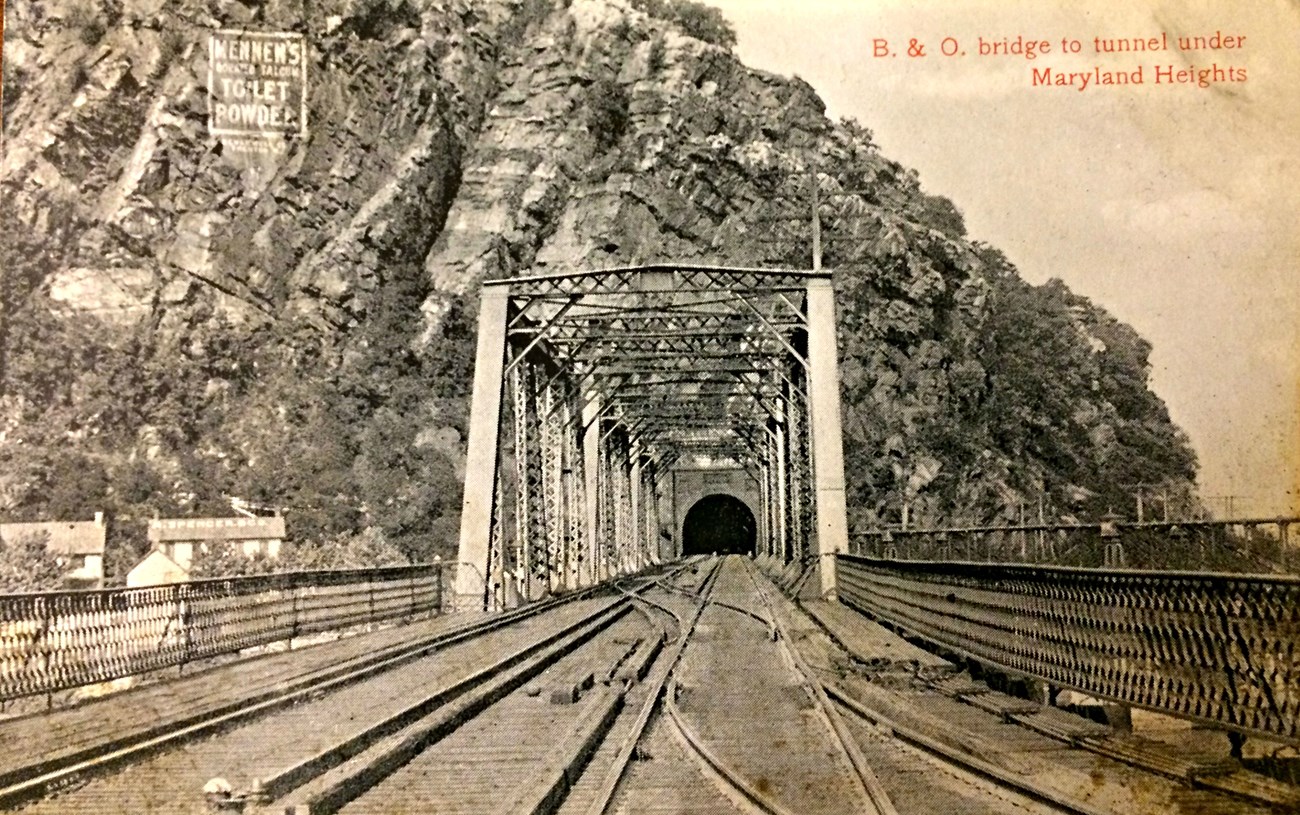
NPS/volunteer E. Doll What Does the Sign Say?The faded painting on the face of Maryland Heights was an early 1900s advertisement aimed at passengers on the B&O Railroad, which was a heavily traveled rail line. It read Mennen’s Borated Talcum Toilet Powder. 
Origins of the SignFrom the establishment of the town in the 1700s through today, this landscape has been exploited for business. From her house on High Street in 1906, Clara Riley watched as sign painters created a huge advertisement, out of a milk and whitewash mixture, on the side of the mountain. Mrs. Riley remembered the year because she was in labor with her first child while the sign was being painted. Maintaining the SignIn May of 1963, the Potomac Appalachian Trail Club (PATC) attempted to hide the sign at the request of Park Superintendent Joseph Prentice. Prentice said that looking at the sign was “like looking across the Grand Canyon and seeing a Coca-Cola sign.” |
Last updated: June 14, 2022
